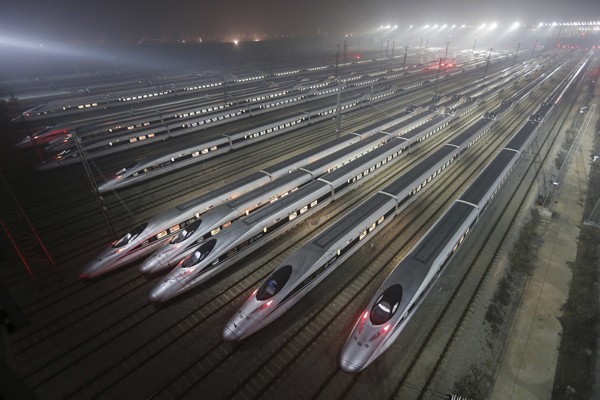This year's Spring Festival, Wu Rongrong will use one of China's bullet trains for the first time. The 27-year-old merchant will ride the train to Guilin, her home city in the Guangxi Zhuang Autonomous Region, a journey that will last 10 hours.
This is a big improvement from her previous journey on board slower trains that lasts more than 28 hours. However, the convenience of speed comes at a high cost. Now Wu has to pay three times the price of ordinary trains. Nevertheless, according to Wu, speed and comfort are more important when taking a long journey.
The Spring Festival's massive travel rush started on Feb. 4. An estimated 2.8 billion trips will be conducted during the 40-day holiday as most Chinese citizens go to their hometowns for reunions.
To help ease the travel rush, many new high-speed railway lines were put into full operation by the end of 2014, granting commuters access to high-speed trains on their way to remote provinces and regions including Xinjiang, Guizhou and Gansu.
At present, 28 out of 31 provincial-level regions now have bullet train access. The accessibility of the trains marks a new era of Chinese transportation, dubbed by commuters as the "era of speed."
China has been using railroads for 130 years and upgrades that span generations are generally met with positive response. The era of bullet trains marks China's rising strength.
Wang Mengshu, a railway tunnel expert, said: "To be prosperous and strong, China must build railways."



























